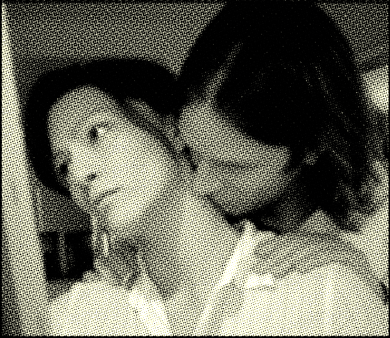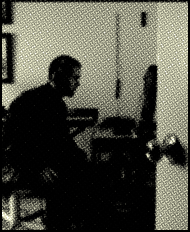| 2006
|
|
|
|
|
|
|
|
|
|
|
|
|
|
|
|
|
|
|
|
|
|
|
 |
|
|
|
|
|
|
|
|
|
|
|
|
|
|
|
|
|
|
|
|
|
|
 |
|
|
|
|
|
|
|
|
|
|
|
|
|
|
 |
|
| |
 |
 |
|
|
|
|
|
|
|
|
 On September 21, 2005 an Airbus plane's forward landing gear malfunctioned
shortly after takeoff, becoming stuck while twisted 90 degrees in the wrong direction. The pilot was forced to fly in circles over the ocean for hours to
burn off fuel, affording millions nationwide the chance to hear
about the breaking news and tune in, to wait for the inevitable crash
landing. The passengers on board were no exception; TV feeds were offered
on the flight, and they were able to watch the tragedy unfold live, albeit
with a somewhat different investment in the outcome. Eventually, the plane
was diverted to LAX and the pilot landed on the two rear wheels only,
keeping the nose up until the last possible moment. Indeed, when the front
landing gear made contact with the tarmac, it virtually disintegrated
into a mass of fire, sparks, and smoke. However, it didn't give out, the
plane landed safely, and everyone changed the channel.
On September 21, 2005 an Airbus plane's forward landing gear malfunctioned
shortly after takeoff, becoming stuck while twisted 90 degrees in the wrong direction. The pilot was forced to fly in circles over the ocean for hours to
burn off fuel, affording millions nationwide the chance to hear
about the breaking news and tune in, to wait for the inevitable crash
landing. The passengers on board were no exception; TV feeds were offered
on the flight, and they were able to watch the tragedy unfold live, albeit
with a somewhat different investment in the outcome. Eventually, the plane
was diverted to LAX and the pilot landed on the two rear wheels only,
keeping the nose up until the last possible moment. Indeed, when the front
landing gear made contact with the tarmac, it virtually disintegrated
into a mass of fire, sparks, and smoke. However, it didn't give out, the
plane landed safely, and everyone changed the channel.
 A lot of planes have been
crashing lately. It's a bit of a trend, perhaps even a new cultural mythology
for the modern world: the airplane disaster. The jumbo jet is an intractable
symbol not just of global travel, but of economic globalization, of business,
of military domination. A lot of planes have been
crashing lately. It's a bit of a trend, perhaps even a new cultural mythology
for the modern world: the airplane disaster. The jumbo jet is an intractable
symbol not just of global travel, but of economic globalization, of business,
of military domination.
 When hurricane Katrina flooded
New Orleans, President Bush ordered Air Force One to fly overhead on the way
back from his vacation in Texas. "It's totally wiped out," he
said, and continued on to Washington. When hurricane Katrina flooded
New Orleans, President Bush ordered Air Force One to fly overhead on the way
back from his vacation in Texas. "It's totally wiped out," he
said, and continued on to Washington.
|
 Airplane
Disasters is an independent feature film by Zach Horton. It was completed
in June 2006. It is the first film completed in a Disaster Trilogy. Airplane
Disasters is an independent feature film by Zach Horton. It was completed
in June 2006. It is the first film completed in a Disaster Trilogy.
 We can gather a few things
about the project. It concerns, at the very least, the relationship between
a young painter named Monica and a young musician named Phillip. It takes
place, not in an airplane, but in a house. A rather fancy house, recently
purchased with the spoils of Philipís newfound musical success.
It has quite a ventilation system. We can gather a few things
about the project. It concerns, at the very least, the relationship between
a young painter named Monica and a young musician named Phillip. It takes
place, not in an airplane, but in a house. A rather fancy house, recently
purchased with the spoils of Philipís newfound musical success.
It has quite a ventilation system.
 Things donít seem to
be going that well for the couple. After all, this is a disaster film. Things donít seem to
be going that well for the couple. After all, this is a disaster film.
 A number of other characters
are also involved, though we canít fathom how. A number of other characters
are also involved, though we canít fathom how.
 Meanwhile, there is a lot
of hiking in the wilderness. In fact, the entire film takes place there.
And in the house, of course. At the same time. This is no doubt only possible
because the screen is split into two simultaneous images. We are unable
to determine the temporal relationship between these two narratives. However,
we can confirm that one is shot in black and white. Well, most of the
time. You can purchase the DVD here. Meanwhile, there is a lot
of hiking in the wilderness. In fact, the entire film takes place there.
And in the house, of course. At the same time. This is no doubt only possible
because the screen is split into two simultaneous images. We are unable
to determine the temporal relationship between these two narratives. However,
we can confirm that one is shot in black and white. Well, most of the
time. You can purchase the DVD here.

|
|
| Elevation: 0 |
|
|
|
|
|
|
|
|
 The
world takes on a peculiar scale from 30,000 feet, normal cruising altitude
for a passenger jet. It's hard, from up there, to feel like you're a part
of the miniature proceedings below. But the cold beauty of detachment,
this Icarus effect, is not without its dangers. It's difficult to lay
down roots in an era of cheap air transportation. The
world takes on a peculiar scale from 30,000 feet, normal cruising altitude
for a passenger jet. It's hard, from up there, to feel like you're a part
of the miniature proceedings below. But the cold beauty of detachment,
this Icarus effect, is not without its dangers. It's difficult to lay
down roots in an era of cheap air transportation.
 And of course things can
go wrong. Just weeks earlier, a Cyprus flight lost pressure at 30,000
feet. With no one conscious, the plane crashed, killing all on board. And of course things can
go wrong. Just weeks earlier, a Cyprus flight lost pressure at 30,000
feet. With no one conscious, the plane crashed, killing all on board.
 Statistically, it remains relatively safe to fly as a civilian passenger, even factoring in terrorist hijackings and bombings. Civilian planes have been
targets for decades; only now they are weapons as well. Statistically, it remains relatively safe to fly as a civilian passenger, even factoring in terrorist hijackings and bombings. Civilian planes have been
targets for decades; only now they are weapons as well. |
|
Civilization's
progress can easily be turned on itself.
 From 30,000 feet, even large
metropoli appear to be natural features of the landscape, organic forms.
This is, of course, an illusion, but one we come to believe and live under,
even on the ground. Without the actual experience of being in a natural
landscape, we lose our awareness of the artificiality of our constructs.
We lose perspective. From 30,000 feet, even large
metropoli appear to be natural features of the landscape, organic forms.
This is, of course, an illusion, but one we come to believe and live under,
even on the ground. Without the actual experience of being in a natural
landscape, we lose our awareness of the artificiality of our constructs.
We lose perspective.
 How can you tell if your
society is at cruising altitude? You have to look at the building blocks
of its structure, the basic connections between people as they interactóas
friends, as collaborators, as artists, and above all, as lovers. How can you tell if your
society is at cruising altitude? You have to look at the building blocks
of its structure, the basic connections between people as they interactóas
friends, as collaborators, as artists, and above all, as lovers. |
|
|
|
|
|
To learn more about
the director, visit www.zachhorton.com |
|
|
|
|
|
 |
|
|
|
|
|
|
|
| |
 |
|
|
| |
Faces |
Lifestyle |
War |
Moving
Pictures |
|
| |
|
|
|
|
|
| |
|
|
|
|
|
|
|
|
| |
|
|
|
| |
|
|
|
|
| |
|
|
|
|
|
|
|
|
|
|
|
|
|
|
|
All
site contents copyright 2006 Jive at Five Films |
|
|
|
|
|
|
|
|
|
|
|
|
|
|
|
|
|
|
|
|
|
|
|









